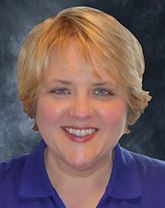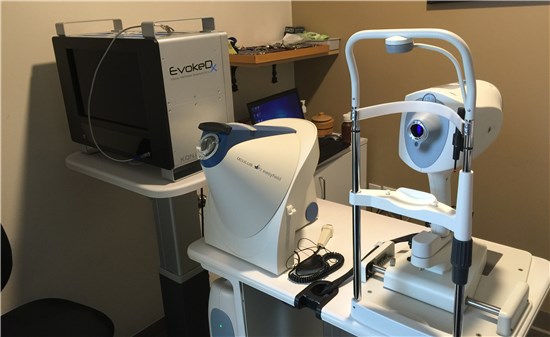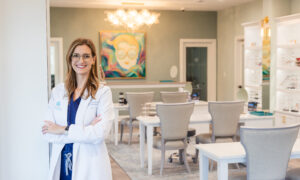By Lisa Greene, OD
May 11, 2016
Medical eyecare is the key to growth and profitability for many optometric practices. In order to succeed with medical model optometry, you need to hone your skills–and also equip yourself with the full range ofinstrumentation to provide your patients with the highest level of care. Our four-OD, one-location practice, adjacent to a LensCrafters in Biltmore, N.C., carefully considers the ability of each new piece of equipment to enhance care, and to add to practice profitability.
Having the latest equipment to offer full-scope medical optometry also is a brand differentiator for a practice. I have technology in my practice that I bought over four years ago that my competitors still don’t have in their practices. Patients enjoy and value having all their needs taken care of in one location. I believe I take more time to explain the diagnosis and treatments than they would get at an ophthalmologist’s office.
Our patients expect the latest technology to help monitor the health of their eyes, and appreciate that we provide the means to accomplish it.

The Evoke DX technology in Dr. Greene’s office. Dr. Greene says having advanced instrumentation like this not only helps you provide full-scope medical eyecare to patients, but enhances her practice brand. Patients see she is able to provide the latest in advanced eyecare.
Define Full-Scope Optometry
Full-scope optometry means diagnosing and treating all eye disease allowed by the practice’s state laws. I have Optos, Annidis, Optovue, Evoke DX, TearLab and MPOD in my practice to help me get to the exact cause of the patient’s visual disturbance.
I believe it is important to discuss with the patient the diagnosis and the treatment they will be receiving in my practice, as well as any treatments they are being sent out for. Prior to having this instrumentation I could only tell patients what I believed was going wrong. Now I can show them their diagnosis using the technology I have available every day in my own clinic.
Determine Best Payment System for New Equipment
Our key instruments ranged from $10,000 for TearLab to $40,000 for Annidis, Optovue and EvokeDX, and $80,000 for the Optos Daytona (estimates only), for which I took out leases through my local bank. At the end of the lease, I will buy them for $1. I believe getting the equipment into the practice ASAP, and being on the cutting edge with my diagnosis/treatment, sends the message to patients that I am constantly searching for ways to best detect changes in the health of their eyes.
Calculate & Project ROI
The revenue stream for the Annidis/Optos was an additional $36.80/comprehensive exam. This includes the medical imaging and screening imaging that is done on most patients. We average about 95 percent imaging on our patients.
Revenue for MPOD testing was $5.15/comprehensive exam. We average 17 percent of patients opting for this testing at their annual exam.
I lease all my equipment, and don’t pay per-click fees. The amounts I quoted are based on the total collected for the year/#comprehensive exams. I didn’t include any office visits in that calculation. My per-patient cost to have the equipment in the office is $12.48. My revenue for the fundus photography (screening and medical) is $36.80/exam. That leaves a net of $24.32 per exam, not including any revenue from OCT/VF/VEP/ERG/MPOD, etc.
I do not share my equipment with any other locations. It is all here and ready for my patients seven days a week!
Establish Criteria for New Equipment Purchases
I want to be on the cutting edge of technology. When I find something that will give me a new way to look at the health, or disease state, of the eye, I bring it into the practice. Patients know and value my quest for technology and desire to help them maintain the health of their eyes. Images are powerful teaching tools. Many chronic eye diseases can have their progression altered if the patient understands how to best maintain their eye health at the earliest possible intervention point.
I typically just look at new equipment that will add value to the services we offer and buy it. My staff is helpful in deciding how to place it in the office and how to schedule patients to keep the clinic flow smooth. My staff understand the value of bringing in new technology, and expect things to change. We also bring in new contact lens designs as soon as they are released.
I trust my fellow ODs who are also early adapters to hear about new equipment. I also put value on the vendor fair at the national meetings I attend and local CE meetings sponsored by equipment companies. I interact at the AllDocs group, Leadership OD and my focus/study group, which provides recommendations on instrumentation. I also bring in consultants to help with integration of new equipment.
My practice has only grown because of the technology I have brought in. If you believe in what you are buying, and the value it has for the patient, utilization won’t be an issue.
Communicate Value of Instrumentation to Patients
New patients are typically “wowed” by all the technology that is used before they even enter the exam lane. My staff explains that the Optos and Annidis are capturing images that allow me to look at each layer of the retina more thoroughly. In the exam lane, I show the patient the images and compare to prior images to show that their eye health is stable/progressing, and then have the conversation about how to keep their eyes as healthy as possible.
My staff is trained by the manufacturers and by the consultant who comes to help improve our overall clinic performance.
Related ROB Articles
Maximize Instrument Use to Enhance Care & Profitability
Invest in a Specular Microscope to Enhance Your CL Practice
6 Key Points for Purchasing Instrumentation for Profitability
Lisa Greene, OD, is a partner with Asheville Vision Associates in Asheville, N.C. To contact: lmgreene2020@gmail.com



























